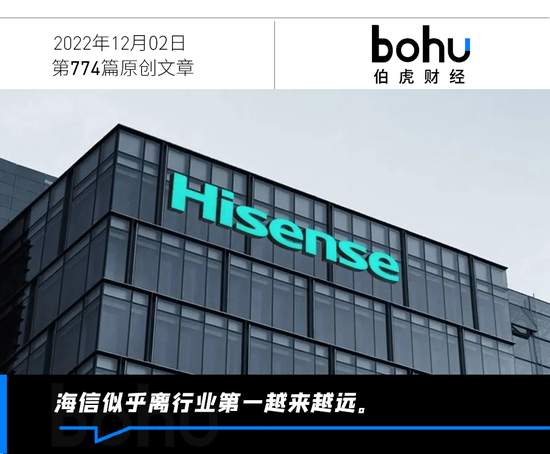
Welcome to the WeChat subscription account of “Sina Technology”: techsina
Author | dream
Source: Bohu Finance
The Chinese elements that can be seen everywhere in the World Cup in Qatar have made netizens ridicule that except for the Chinese team, everyone else has gone. In particular, seeing the slogan “No. 1 in China and No. 2 in the world” by Shanghai Letter on the field, it also aroused some people’s nerves. Many people have begun to feel the profoundness of Chinese culture, and the following interpretations seem to be very reasonable.
Breaking the defense, is this insinuating the national football team all over the world? It’s fine if your own people scold you, but throw embarrassment at the whole world?
Since Hisense is the second in the world, who is the first?
Enterprises are not allowed to use the words “national level”, “superlative”, “best” and other words to promote, but Hisense advertisements are placed in Qatar, so is it out of the question? Is this legal?
Hisense so awesome? Already number one in China and number two in the world?
When seeing Hisense’s slogan has been discussed on the hot search, many people realized that Hisense’s money was worth it. After the controversy, on November 30, Hisense released the slogan of the World Cup scene, which has become “Made in China, work together”. Repeatedly on the verge of “cutting the edge”, this time Hisense is scared?
“Controversial Pleasure”
This is not the first time that Hisense has sponsored a top-level event. In the past few years, it has almost never dropped. In the 2016 European Cup, the 2018 World Cup, the 2021 European Cup, and the Qatar World Cup in 2022, Hisense has bet on football for four consecutive times. contest.
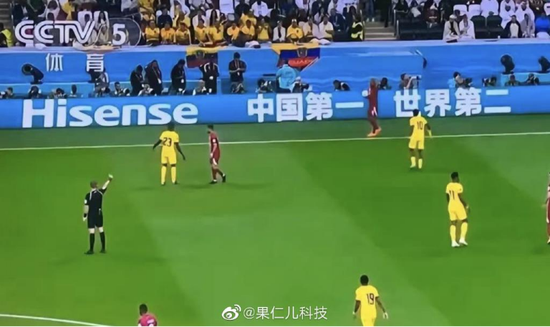 (Source: Network)
(Source: Network)And this is not the first time Hisense has been controversial. Lanxiong Sports revealed that in the 2016 European Cup, Hisense, as the first sponsor from mainland China, appeared on the billboard on the sidelines. However, before the game started, it was reported that one of Hisense’s advertising slogan proposals “Are U turned on?” involved sexual innuendos and was rejected by UEFA.
Finally, Hisense’s slogan on the billboard is “Hisense TV, No. 1 in China”.
In the 2018 World Cup in Russia, Hisense also put up the slogan “Chinese TV, Hisense No. 1” on the sidelines. At that time, some netizens questioned whether Hisense’s advertising language was illegal. However, Hisense’s two controversial slogans in football competitions did not make further statements or dispositions after the games, but the returns they brought were considerable.
According to public data, during the European Cup in 2016, the cumulative number of viewers worldwide has exceeded 6.6 billion, and China alone has 1.2 billion viewers, which has brought great brand exposure to Hisense, and its global popularity has increased by 6 percentage points. Quarterly sales in the European market increased by 65%.
Since the 2018 World Cup in Russia began in June, the sales of Hisense TVs in Russia have shown explosive growth. Within half a month, sales have surged by nearly 300%, setting a record high. As a result, Hisense TVs were out of stock, so they had to expedite shipments from Shandong to ensure normal supply from Russia.
During the 2021 European Cup, data show that overseas, the global sales of Hisense U7 and U8 series TVs increased by 143.1% year-on-year, and the sales of Hisense high-end flat door series refrigerators increased by 208.5% year-on-year. Especially in the five core European markets, the cumulative sales of Hisense U7 and U8 series increased by 205.4% year-on-year.
According to public data, starting from sponsoring the European Cup in 2016 and announcing its sponsorship of the Qatar World Cup in 2021, Hisense’s global popularity has risen from 37% to 59%, and its overseas sales have increased from 19.6 billion yuan to 72.5 billion yuan.
No matter from the perspective of popularity and overseas sales growth, although Hisense’s sponsorship of sports events is “willing”, it does have income. But why does it seem so “worried”? This is about the embarrassment of Hisense being number one in the country and number two in the world.
“No. 1 in China, No. 2 in the world”, really?
According to Omdia statistics (Omdia’s statistics are based on sales volume), from the perspective of sales volume, in the first three quarters of 2022, Samsung Electronics ranked first with 20.2%, followed by LG Electronics (12%), TCL ( 11.7%), Hisense (10.1%), Xiaomi (6.5%); in terms of sales, Samsung Electronics ranked first with a market share of 30.2%; LG Electronics ranked second with 17%; TCL ranked second with 9.3% Ranked third; Hisense’s market share is only 8.6%, ranking fourth; Sony’s market share is 8%, ranking fifth.
According to sales volume, market share, etc., ranking first in the industry is not Hisense’s turn. How did Hisense come to be “No. 1 in China and No. 2 in the world”?
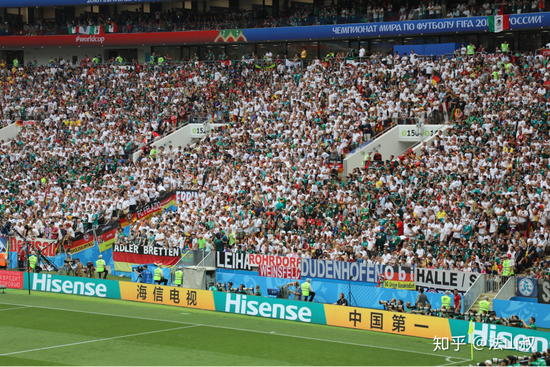 (Source: Network)
(Source: Network)According to the video message released by Hisense official Weibo before the start of the World Cup, “Hisense TV shipments in the first 10 months ranked second in the world!”. According to the “Monthly Data Report on Global TV Brand Shipments” released by AVC Revo on November 15, Hisense’s global TV shipments from January to October surpassed LGE, ranking second in the world and first in China. Note that it is only the scale of shipments, not sales. (It may be preparing for the World Cup, a lesson learned from the out-of-stock in 2018), so China’s No. 1 inevitably makes people feel a bit reluctant.
Behind Hisense’s frequent sponsorship of international competitions and its dedication to creating “first” character designs, Hisense’s anxiety is revealed.
The financial report shows that Hisense Video achieved revenue of 12.297 billion yuan in the third quarter of 2022, a year-on-year decrease of 5.14%, and the net profit attributable to shareholders of listed companies was 513 million yuan, a year-on-year increase of 116.19%; the first three quarters achieved operating income of 32.511 billion yuan , a year-on-year decrease of 4.16%, and the net profit attributable to shareholders of listed companies was 1.107 billion yuan, a year-on-year increase of 76.86%.
In the downturn of color TV, Hisense’s growth is mainly due to the following three reasons.
First, Hisense is the only TV manufacturer in the domestic market that has full coverage of high-end (Toshiba), mid-range (Hisense), and low-end (Vidda) brands, widening the gap with competitors. In particular, new products equipped with new technologies, such as OLED/Mini LED/Micro LED TVs, bezel-less TVs, and stacked screen TVs, are emerging one after another, and the penetration rate of high-end TVs is rapidly increasing. According to data from Aowei Cloud, in 2022H1, Hisense’s retail sales of offline high-end TVs in the Chinese market accounted for 30.24%, ranking first.
The second is the layout of market segments. According to the omni-channel monitoring data of Aowei Cloud Network, in the first three quarters of 2022, the retail sales of game TVs with high refresh rates of 120Hz and above will reach 11.3%. As early as 2020, Hisense took the lead in deploying high-refresh rate TV products, and occupied the leading position in the high-refresh TV market. In the first three quarters of 2022, Hisense-based TVs accounted for 28.9% of the retail volume of the high-refresh game TV market of 120Hz and above, ranking first.
Third, the company has sponsored the world’s top sports events for four consecutive years since 2016, promoting the expansion of the brand’s reputation at home and abroad. According to Ipsos’ research data, in 2022Q2, the brand awareness of Hisense TV ranks first in the domestic market. 37% rose to 59%.
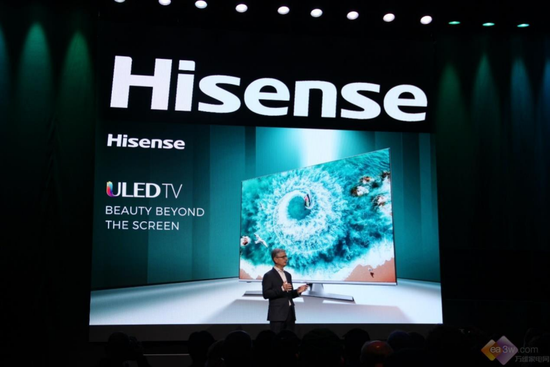 (Source: Network)
(Source: Network)However, it cannot be ignored that this outstanding performance is largely related to the continuous reduction of panel prices. It is reported that in September, the prices of 32-inch, 50-inch and 65-inch LCD TV panels were -46%, -55% and -56% year-on-year respectively, all falling to the lowest level in recent years. The price fluctuation of the panel is uncontrollable.
Another worrying thing is that the online sales of Hisense brand TV from July to August were +8% year-on-year, and the offline sales were -17% year-on-year. That is to say, in the case of the decline of raw materials and the decrease of the unit price of products, offline sales will not increase but decrease?
On the one hand, although Hisense has ULED and other technologies to enhance product competitiveness, Samsung, Xiaomi, Skyworth, and TCL each have their own main directions of attack. Ma Cong, the former deputy editor-in-chief of the State Grid of China, believes that now is the game period of various display technologies. As for which display technology will win, it is difficult to judge. Both technologies coexist. In the end, it is more the market that decides everything.”
On the other hand, the country has entered the stock market from the incremental market. According to the data disclosed by IDC in 2020, China’s smart TV market will ship 44.8 million units in 2020, and it is expected to reach 48 million in 2024, with a compound growth rate of only 1.7%. At the same time, the Qianzhan Industry Research Institute predicts that by 2025, global smart TV shipments will reach 230 million units, with a compound growth rate of 6.0%; 292.6 billion US dollars, with a compound growth rate of 11.8%.
The country is in a growth dilemma. In contrast, the cake in overseas markets is much larger. The number of players going overseas has increased, and Hisense, which has been tepid overseas for many years, can only spend a lot of money, frequently show its face in international competitions, and quickly increase market recognition.
Overseas low gross profit margin is difficult to solve
As early as 1985, Hisense began to have foreign trade business. At that time, it was mainly OEM, but the OEM could not make a brand or make a profit, so it could only win the price war. In 2006, Hisense chose a more difficult path and began to promote its own brand overseas. At that time, independent brands accounted for less than 10% of the overall overseas business.
Hisense, like most overseas companies, chooses overseas mergers and acquisitions. The acquisition of a company with a certain brand influence can shorten the time for Hisense to cultivate its brand in foreign markets. For example, in 2018, Toshiba Video Systems (TVS) was officially acquired. At the same time, Toshiba’s rocket launcher audio and REGZA picture environment engine further enhanced Hisense’s research and development capabilities.
In addition, Hisense began to sponsor the top league with a lot of money to show up. Now, Hisense’s global popularity has risen to 59%, and it seems not surprising that there is an increase overseas. But what is worrying is the serious low profit margin in Hisense’s overseas market.
According to 36 Krypton Pro, according to the financial report of Hisense Video, in 2020, the domestic gross profit of TV products will be 27.66%, and overseas will be half of it, which will be 12.48%, and the growth rate will only be 0.74%.
The situation of home appliances is even less optimistic. According to Flush iFinD, in 2021 Hisense’s overseas revenue of home appliances will be 23.16 billion yuan, operating costs will be 21.184 billion yuan, gross profit will be 1.976 billion yuan, and the gross profit rate will be only 8.53%. In 2021, the overseas gross profit margin of Haier Zhijia will be 28.21%, and the gross profit margin of Midea Group’s overseas business in 2021 will be 21.76%.
Therefore, the reason why Hisense frequently shows its logo in the top league venues is actually very embarrassing. Although it has been overseas for more than ten years, it still has not been able to make a name for itself overseas with its products. For a long time, Hisense’s sales expenses have remained high. Among them, Hisense’s sales expenses from 2019 to 2021 are 3.605 billion yuan, 3.333 billion yuan, 3.53 billion yuan, and 3.6 billion yuan respectively, accounting for 10.56%, 8.48%, and 7.56% of the annual revenue. During the same period, TCL’s 2019-2021 sales accounted for 3%, 1.2%, and 1.2%.
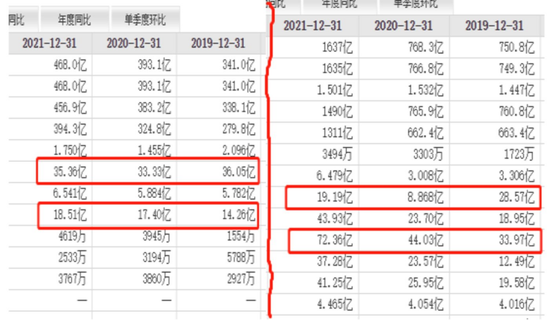
(Left: Hisense’s sales expenses, R&D expenses; right: TCL’s R&D expenses, sales expenses)
It is worth mentioning that Hisense’s sales expenses in 2020-2021 are almost twice the research and development expenses, while TCL in the same period is completely opposite, and the research and development expenses are almost twice the sales expenses. At present, when Hisense’s market share in global TV companies is lower than that of TCL, Hisense’s current strategy is to focus on marketing over R&D; while TCL’s strategy is to focus on R&D over marketing when it has a dominant global market share.
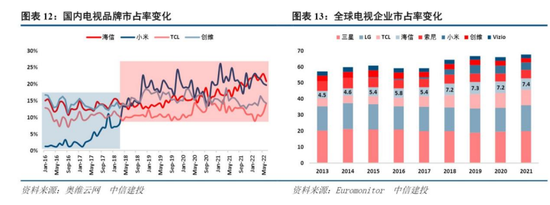 (Source: Network)
(Source: Network)Although, it is difficult to judge the pros and cons of the two for a while. But history tells us that if long-term marketing is more important than research and development, then this business will become very dangerous.
Today, domestic growth is difficult, and overseas gross profit margins are difficult to increase. Behind Hisense’s focus on marketing is anxiety. It seems that the dream of being the first in the industry is getting farther and farther away?

(Disclaimer: This article only represents the author’s point of view, not the position of Sina.com.)
This article is reproduced from: https://finance.sina.com.cn/tech/csj/2022-12-02/doc-imqmmthc6848907.shtml
This site is only for collection, and the copyright belongs to the original author.